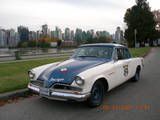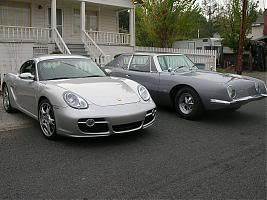I have some dumb questions about installing freeze plugs. I am installing new freeze plugs in a full flow 289 that my son and I are rebuilding. The holes have the lip on the inside, although in some of the holes part of the lip has corroded.
I have new brass freeze plugs, which are saucer shaped. The part number is stamped on the "inside" of the saucer. My questions are:
- which way is the plug installed - rounded side facing toward the block, or rounded side facing away from the block?
- what is the proper way to install them? ie. if rounded side is facing away from the block, do I tap the crown with a hammer?
I didn't see anything in the shop manual, and my search on the forum didn't talk about these basics, probably because everyone already knows this!
Thanks.
John
1953 Commander Coupe
1954 Champion Sedan
1963 Lark

I have new brass freeze plugs, which are saucer shaped. The part number is stamped on the "inside" of the saucer. My questions are:
- which way is the plug installed - rounded side facing toward the block, or rounded side facing away from the block?
- what is the proper way to install them? ie. if rounded side is facing away from the block, do I tap the crown with a hammer?
I didn't see anything in the shop manual, and my search on the forum didn't talk about these basics, probably because everyone already knows this!
Thanks.
John
1953 Commander Coupe
1954 Champion Sedan
1963 Lark



 ] [V] [xx(]
] [V] [xx(]
Comment